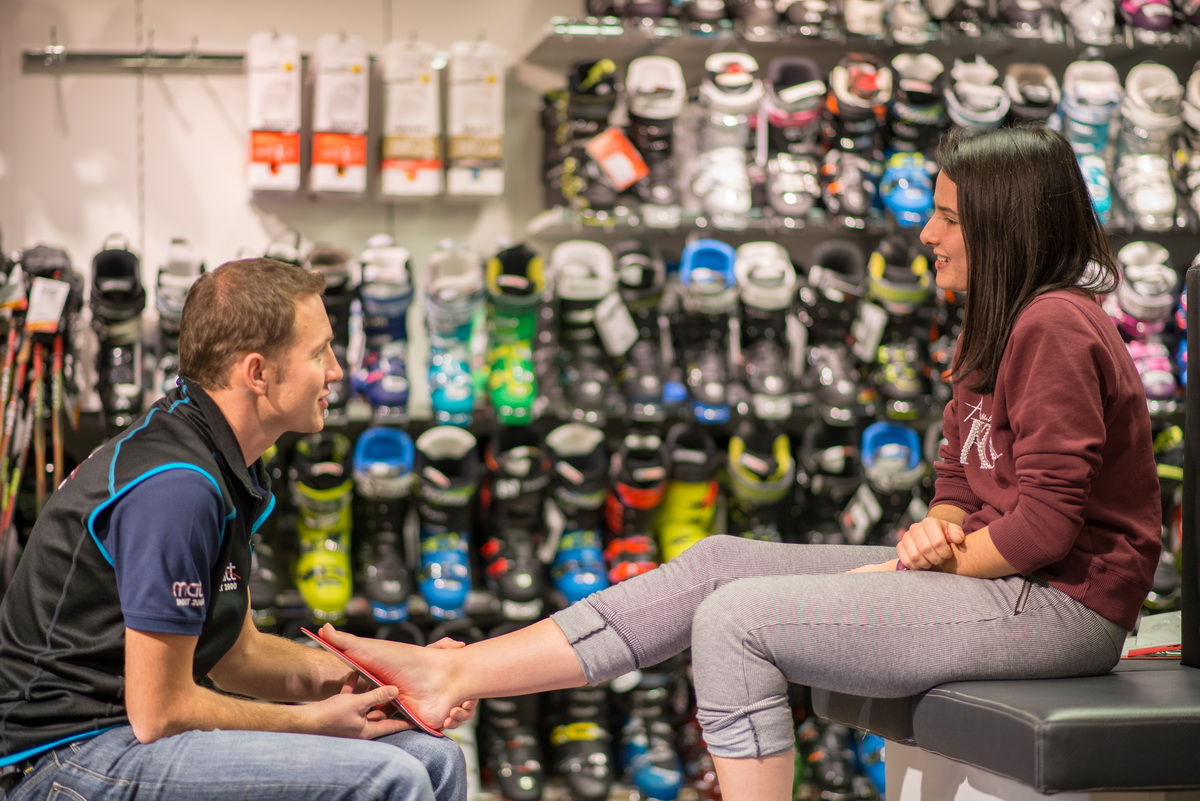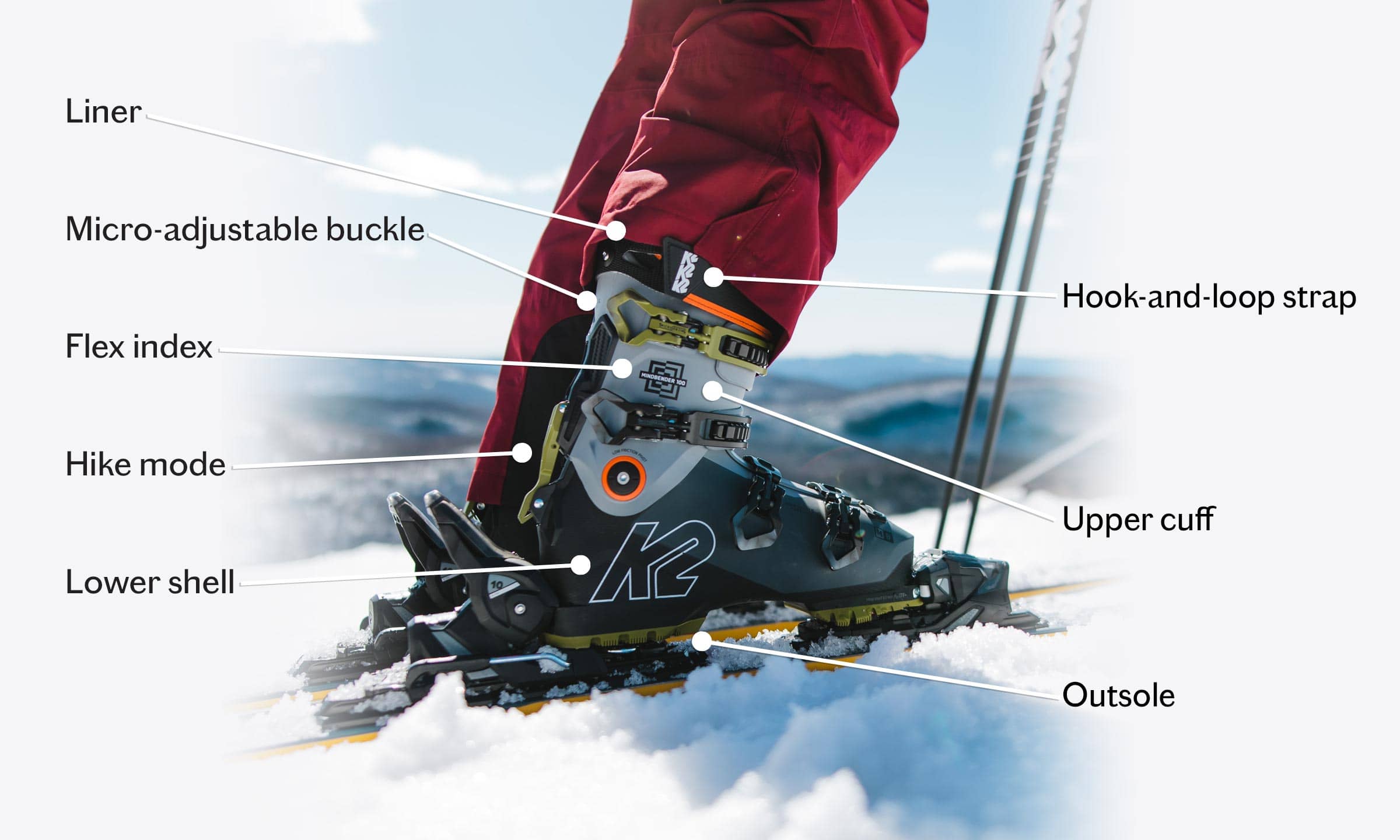
There are many essential pieces of equipment required to be able to ski properly and comfortably while you’re on the mountain. However, which piece of equipment is most important to a skier or rider and why? Skiers and riders will all have different opinions on what is most important to them: skis, helmets, clothing, or other equipment that they feel is most vital to them. It is not surprising though that most skiers or riders choose their boots as the most important piece of equipment they use while on the mountain.
Boots are what many professionals in the industry say are the most important piece of equipment that a skier or rider will use. It is the driving mechanism that enables you to control your skis or board and provides the stability and flexibility to navigate down the mountain. A few turns down the mountain is all a person needs to know that they are wearing the wrong pair of boots for them. Selecting the right boot for you should be done with the assistance of a professional boot-fitter who will ensure the process is done correctly. However, people have all different sizes and shapes of feet and that’s the same for the wide selection of boots in the market as well. What would most men do if a professional boot fitter recommended that a man was best suited to wear a pair of women’s boots?
It is a fair question to ask; with so many different styles of boots that are so technologically advanced, it could be very possible that the best boot for you is from the opposite gender. This is due to the simple fact that all people literally have different size feet and there is no “general setting” for defining a person’s foot shape. Some people have high arches or are flat-footed; some have wide feet or narrow feet, and those differences are key to figuring out what boot is best for you. Height and weight are important factors in skiing, but the most determining factor on what boot a person should get is based on the ability and skill level of the skier.
One big question that should be answered is: what is the difference between a men’s boot compared to a women’s boot? The biggest difference between a men’s and women’s ski boots is the height and the size of the boot’s cuff. Women tend to be shorter, therefore the boot’s height is smaller, and women’s calves tend to be more proportionally sized than men’s.

So, what exactly is a cuff on a pair of ski boots and why does it matter? The shell is the hard outer layer of the ski boot and consists of two parts, the lower shell and the cuff. The lower shell is the part where your foot is contained, and the cuff is the part that goes around your shin and lower leg. The cuff on a ski boot must match the angle of the lower leg and must be centered between the two sides of the cuff. This provides the skier with the ability to maintain proper balance while going down the mountain.
The general rule regarding how tight the cuff is on a boot directly relates to the skill level of the individual skier. Looser cuffs are geared towards beginners and allow them the ability to make corrections easier. Tighter fitting cuffs are desired by skiers who are more advanced and want immediate feedback when making quick and fast turns. An easy comparison to relate to is a loose or tight steering wheel on a car. Race cars’ steering wheels are very tight and require very little movement due to how fast they drive. This relates to a typical car that you would purchase at a dealership which is not designed to go 200mph down the road. Those cars do not need a tighter steering wheel and therefore are looser to allow the driver to make adjustments more easily.
However, there is one difference between men’s and women’s ski boots that is pretty standard in the ski boot industry and that is the flex rating on the boot compared to the size of the boot. The flex rating is simply how flexible the outer shell of the boot is to the response of the skier leaning forward in the boot. Is the boot hard to push forward, and how much does it push back when you do lean into it? A boot that has a lower flex rating is more flexible and a boot that has a higher flex rating is stiffer. Hence, beginner skiers usually have a lower flex rating and more advanced skiers have higher flex ratings on their boots.

The situation is that there are not a lot of ski boots in the market for women who have small feet and want a higher flex rating. The industry has started moving in that direction over the last few years, however, the number of ski boots in the market that have higher flex ratings for men greatly outnumbers that of women. The simple answer to why this is happening in the industry is supply and demand. There just is not enough skiers with small feet that are seeking higher flex rating for boots or the industry would have adjusted for it already. After all, manufacturers and retail stores are in the business of making money and would not miss out on the opportunity to make more money if they had the chance.
-
Related Article: Internet Debate Resolved: How to Properly Buckle Your Ski Boots
The original question of whether or not a man would be willing to wear a women’s ski boot if it fit him better might seem a little odd. There are plenty of men who are not over six feet tall and likewise, there are plenty of women who are over six feet tall. There are men who have narrow feet with high arches and there are women who have wide feet that are flat-footed. There are men who are tall with large feet who are still beginners and there are women who are short with small feet who are expert skiers.
SnowBrains asked its followers in a post on Facebook that original question and the responses were very honest and enlightening. Most of the responses to the question from men said they would wear a women’s ski boot if it were better than a men’s boot for them. There were some who said that they already do wear women’s ski boots and some also stated they wear women’s helmets and use women’s skis as well. Some of the responses were:
- “If it works best for me, then why not?”
- “If it makes me feel comfortable on the mountain, then I’ll use it!”
- “As long as it makes me a better skier then I would use it.”
We would love to hear your thoughts on if you would wear a pair of ski boots or any other piece of equipment if it was designed for the opposite gender. Please leave your comments in the section below.
I am a 61 year old male ski instructor, teaching about 30 hours a week. I have wide flat feet and have gone thru plenty of boots. My current teaching boot has a stiffness rating of only 75. Comfortable for 8 hours of green to double blacks as well as standing, walking and hiking. In my opinion, based on years of training and teaching skiers of all levels, is that most recreational and non racing skiers are wearing a boot that is too stiff, too tight and too cold. They are also not wearing proper socks and pants. Their feet either hurt after a couple of hours or are freezing. Why? Because they bought a performance boot instead of a recreational boot from a dealer who encouraged them to upgrade and not from a good boot fitter. Todays boots are so well made that a properly fitted pair at any price should be comfy, tight and warm.